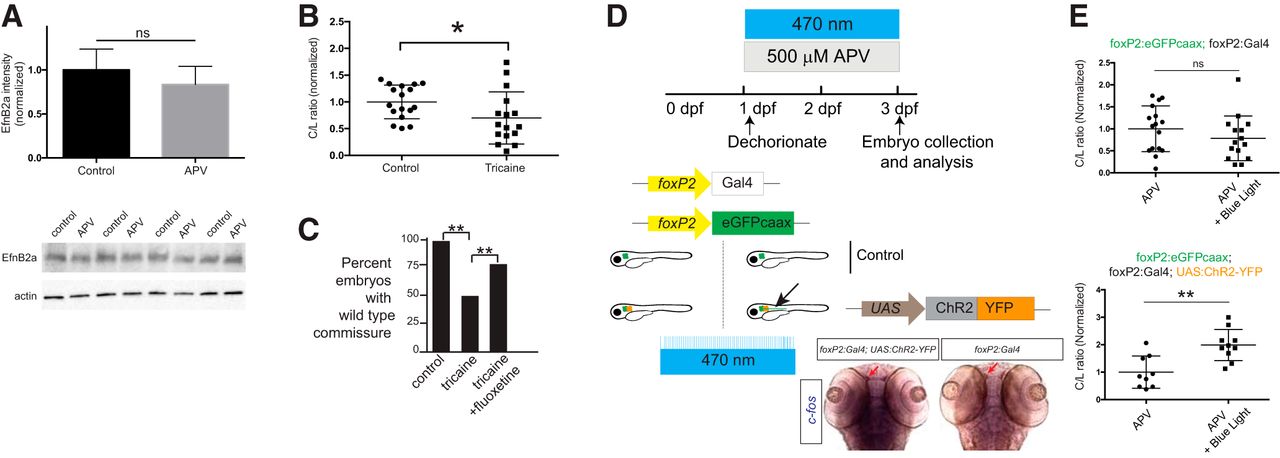Fig. 4
The midline crossing decision is regulated by neuronal activity controlled by the NMDAR. A, EphrinB2a (EfnB2a) levels are unchanged in the telencephalon with APV treatment. Bar graphs show confocal quantification in telencephalon; ns, not significant; Student’s t test. Error bars, SEM. Western blotting of the four separate experiments with actin control is shown below. B, Tricaine quantification, scatterplot C/L results for TCPT crossing; *p < 0.05; Student’s t test. C, Fluoxetine rescues effects of tricaine on TCPTc. Intensity ratio data shown with values normalized to controls as bar graphs; *p < 0.05; Student’s t test; error bars, SEM. D, Schematic workflow of optogenetic analysis. Embryos were dechorionated and exposed to APV and 470-nm light exposure from 1 to 3 dpf. Embryos were double-transgenic for foxP2:egfp-caax; foxP2:Gal4. Some embryos carried UAS:ChR2-YFP (determined by post hoc genotyping). If neuronal activity could rescue pathfinding, only triple-transgenic embryos would have normal midline pathfinding (arrow). Bottom pictures, In situ c-fos analysis of experimental embryos after 470-nm light exposure. Embryos carrying ChR2-YFP have increased c-fos expression (red arrow in region of foxP2.A.2 neurons). E, Results of optogenetic experiment show that specific restoration of activity in foxP2.A.2 neurons is sufficient to rescue APV inhibition. Top plot, Double-transgenic embryos (no channelrhodopsin) have no rescue. Bottom plot, Triple-transgenic embryos restore midline pathfinding. C/L scatterplot results; ns, not significant; **p < 0.01; Student’s t test.

